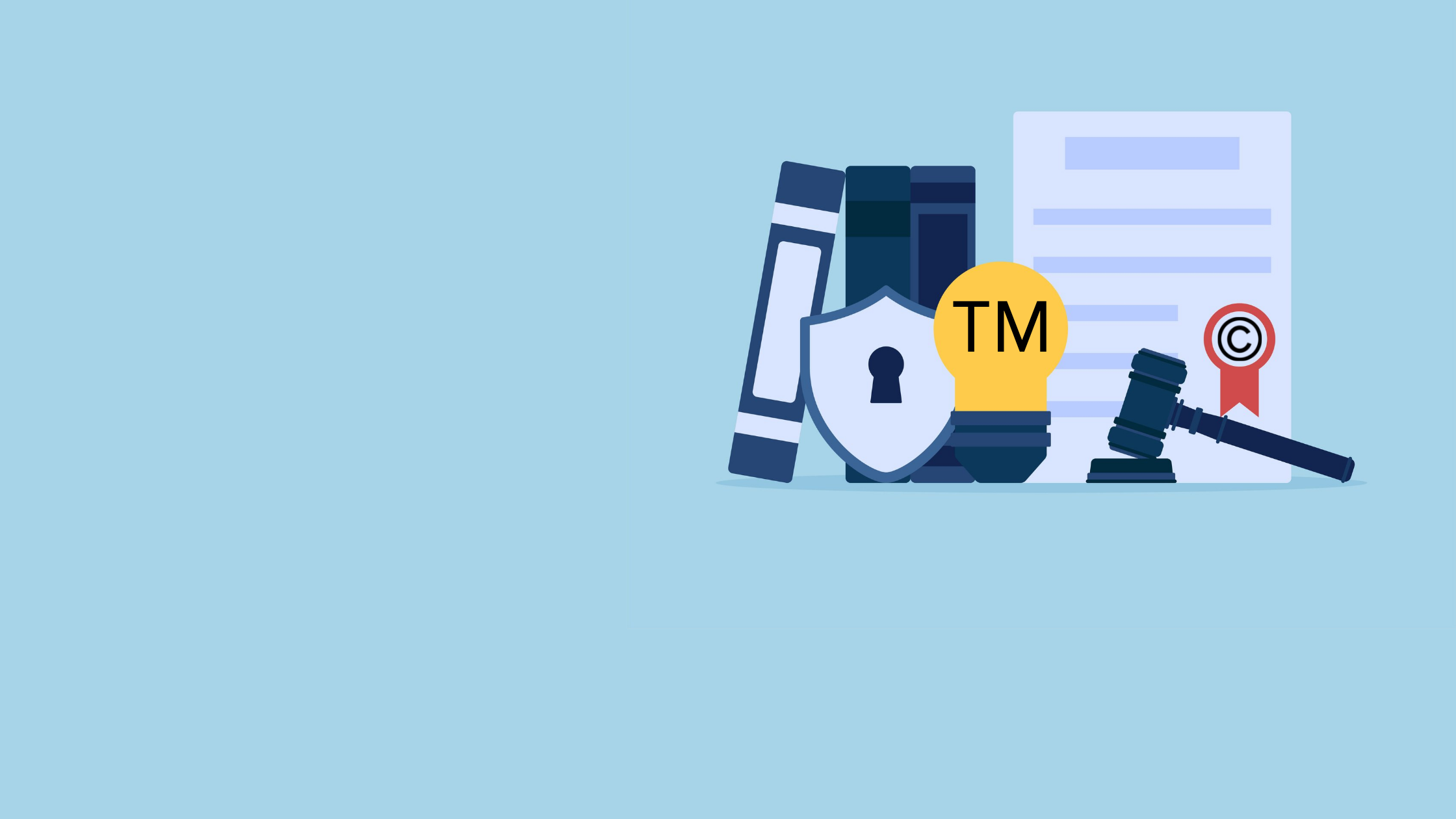At first glance, trademark restrictions seem like a very cut and dry rule, for example, if you try to register “Netflix.xyz”® you will most definitely be facing a lawsuit. However, some trademark restrictions are not so obvious. In this article, we will explore the ins and outs of trademark restrictions and how to avoid registering domains that could get you in trouble.
What is Trademark Infringement?
What is a Trademark?
So, what is a trademark? A trademark is a word, phrase, symbol, or design that identifies a set of goods or services. When discussing domains specifically, it refers to a word or phrase.
Trademarks are protected under federal law. To ensure the most protection and ownership of a trademark, you must file through the United States Patent and Trademark Office (USPTO).
What is Trademark Infringement?
Now that we know what a trademark is, we must understand what it means to infringe upon it. Trademark infringement refers to when someone uses another company’s or person’s trademark without express permission from the trademark owner in an attempt to create confusion or deception on where the good or service originates from. Long story short, you can’t use another companies brand name to promote the sales of your product, which in this case is your domain.
Categories of Domain Infringement
We get it; trademark infringement is bad, but what does it mean within domain registration and sales? Overall there are 4 main avenues of domain infringement.
Cybersquatting
Cybersquatting is pretty self-explanatory. Much like regular squatting, it is when someone who has no legal claim over a domain name, registers a trademarked domain to either sell, prevent the trademark owner from acquiring it, or divert traffic from the trademarked company’s site to their own. The court’s decision on cybersquatting relies upon two different categories; "bad faith" and "good faith."

Good Faith
According to the Anti-Cybersquatting Piracy Act (ACPA), the 4 situations in which the act of cybersquatting would have been in good faith are:
- If the registrant has any trademark or other intellectual property rights in the name.
- If this is the legal or nickname of the registrant.
- If the registrant's prior use of the domain name is in good faith with the offering of goods and services.
- If the evidence of lawful noncommercial or fair use of the mark in a website under the domain name.
Bad Faith
The definitions of bad faith cybersquatting outlined by ACPA are as follows:
- Intent to divert to a site that could harm the trademark owner's goodwill - (for commercial gain, slander, or incite confusion).
- Offer to sell the domain name without having used it or intent to use it.
- Intentional provision of misleading contact information in the domain name registration application.
- Warehousing of multiple domain names known to be identical or confusingly similar to company trademarks ( ex. Dinsey.com v.s. Disney.com®)
- The extent to which a mark is distinctive or famous. (the more famous a trademark or company name is, the higher the fine for violating).
At the end of the day, it’s much easier to avoid any type of cybersquatting than to hedge your bets on proving that your domain registration was in good faith.
Typosquatting
Typosquatting isn’t very different from cybersquatting. Most would consider it a subsection of cybersquatting. Typosquatting is the act of registering a domain containing a common misspelling of a popular trademarked domain to divert traffic from the intended site. Think about the earlier example of Dinsey.com vs. Disney.com®.
Did you know that Google owns Gooogle.com, Goolge.com, Gogle.com, Gogole.com, Googel.com, and Googl.com? This might seem silly but think about it, when you type google into your browser, how closely are you making sure that you’re spelling correctly? Before the implementation of cybersquatting laws, registering a common misspelling of a popular company’s URL was extremely profitable. Domainers could hold popular misspellings hostage until companies were willing to pay the hefty ransom. According to the Anti-Cybersquatting Consumer Protection Act, the legal parameters of what is considered typosquatting consist of whether the domain could be considered “confusingly similar” to a registered trademark. It’s best to steer clear of any domain registrations that could be considered typosquatting.
 Competing Use
Competing Use
Competing use is a complicated concept of trademark rights. Because categories and territories separate trademarks, many companies can use similar domain trademarks without infringing on the other’s trademark. For example, ‘American’ is trademarked by several companies, including American Airlines and American Apparel. Although both companies have access to the trademarked American, only one company can trademark “american.com”. If you find yourself in a position where you need to clarify these concepts, please reach out to a legal professional.
Reverse Domain Name Hijacking
Reverse domain hijacking is a form of trademark infringement where the rightful trademark holder tries to get a domain name by threatening to make cybersquatting claims against the domain name's current owner. Now you may be thinking, Hey this seems like the right thing. Why wouldn’t the rightful trademark owner be able to file cybersquatting claims against the perceived cybersquatter? It all comes down to intent. Reverse domain hijacking is defined by ICANN's Uniform Domain Name Dispute Resolution Policy (UDRP) as “the filing of a complaint in bad faith, resulting in the abuse of the UDRP administrative process.” If the trademark owner files these claims in good faith against a perceived cybersquatter, then everything is ok. But suppose the trademark owner files these claims against a perceived cybersquatter in bad faith. In that case, they are participating in the same blackmailing process that a cybersquatter of bad faith takes part in. It’s the same ideology of “if we stoop to their level what makes us any better than them?”.
Fair Use Doctrine
Don't be afraid, not every use of trademarked material is off the table. Fair use Doctrine permits limited commercial use of copyrighted material without having to first get permission from the copyright holder. According to ACPA, “fair use includes comparative advertising, comment, criticism, or parody”. Don’t get it twisted; establishing a site with a fair use trademark does not protect cybersquatters from a bad faith determination.

How to Avoid Being Sued
The last thing anyone wants is to be knee-deep in a lawsuit with a major corporation. Now that you understand what trademark infringement is and its serious repercussions, it's time to ensure that you're not committing a trademark violation. Listed below are some great resources to help you avoid getting sued.
ICANN
ICANN is a corporation centered around ensuring a safe and secure internet experience. If you ever find yourself in a situation where you are unclear as to whether what you are doing is violating internet laws, your best resource is the ICANN database. ICANN’s vast database includes legal definitions of trademark laws specified to the internet space.
How to Know if a Domain Has Been Trademarked
The first step to ensuring that you are following ICANN's trademark registration laws is to know what domains are already registered and what their trademark status is. Any domainer can find a domain's registration status but determining whether they’re trademarked is essential.
Search USPTO
The easiest way to find whether your potential domain is trademarked or not is to do a trademark search on the United States Patent and Trademark Office (USPTO). As long as your domain doesn’t infringe on any trademarks listed in USPTO you should be ok.
Bulk Patent Checking
USPTO is a great resource, but what if you want to check your whole domain portfolio for trademark violations? There are quite a few websites that provide bulk trademark checks.
Estibot
One of the longest-standing mass domain trademark check platforms is Estibot. Estibot's bulk trademark checking software runs every single one of your domains through the USTPO database at the same time.
Domain Index
Domainindex.com is another great resource, not only do they provide an easy copy and paste bulk trademark check they also have hundreds of other tools that make domain history checks and appraisals super easy.
Seek Out Legal insight
At the end of the day, the safest bet is to always consult a professional. No amount of Google search results and Wikipedia pages compare to a living breathing attorney. Don’t let pride be the reason you receive a cease and desist letter.

Consult with a Licensed Attorney
Before registering your TLD make sure that you aren’t violating a protected trademark. If you already have a registered domain that you think might be in violation of trademark law, legal advice from a litigation and dispute lawyer may be the best option.
* Sav Holdings Group LLC cannot and does not contain legal advice. The legal information provided is for general informational and educational purposes only and is not a substitute for professional advice. Accordingly, before taking any actions based upon such information, we encourage you to consult with the appropriate professionals. we do not provide any kind of legal advice. THE USE OR RELIANCE OF ANY INFORMATION CONTAINED ON THE SITE IS SOLELY AT YOUR OWN RISK.
About
Read for insights
Find ideas for your business, gain leadership, stay on top of the strategic trends of your market to beat your competition.
Popular
Top Articles
Categories
topics on the blog
Recommended articles
Managing Your Domain Portfolio
There are several pieces that go into building a domain portfolio, and if done correctly you can have a substantial return on your...
Read moreAuctions Made Simple
An auction is one of the most popular ways to get the best domains. As a seller, it's a great way to sell your domain fast and for the most...
Read more


